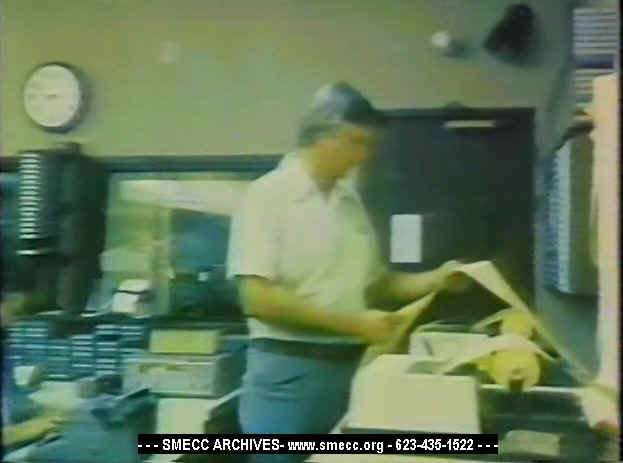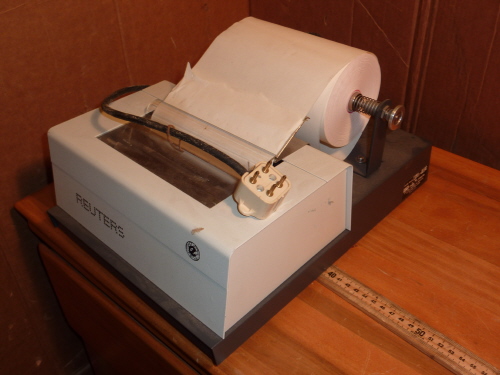|
EXTEL
CORPORATION
A Brief History
As recoded by Jim Haynes
August 27, 2001
Shortly after Walt Zenner retired as Vice President
of Research and Development
at the Teletype Corporation in 1964 he and Peter Mero, developer
of the Electrowriter,
formed the Quotemasrer Corp.
The company started small with just a couple of technicians
working under the
direction of Zenner in a leased building in Rosemont near the O'Hare
airport. Their first
product was a stock ticker. It had a continuously running
typewheel and printing was
done on the fly. There were already stock tickers on the market
but the Quotemaster had
a unique selection feature. A customer could gel up the stock
symbols he was following
and the ticket would print only those symbols as trades were made
on the exchanges.
This eliminated the usual searching through hundreds of feet or
paper tape for the stock
trades a customer was interested in.
TransLux, the company that made projectors for the stock exchange
purchased
the right to the product and planned for its manufacture. Shortly
thereafter, the economy
took a downturn and production plans were put on hold.
In addition to the product Translux wanted the right to the name
Quotemaster.
This was granted but now the company had to find a new name. In
England the telegraph
systems are operated by the federal government along with the
telephone and post office.
The London stock exchange had a private telegraph company for its
ticker and financial
news operations. This company was called the Exchange Telegraph
but people used a
very popular nick name, Ex Tel. This nick name was not registered
so Peter adopted it
for the new name of this small company. The name added prestige in
Europe out of
proportion to the American company with a staff or five.
With the inflow of funds from the sale of the ticker, work began
on a dot matrix
printer. By 1969 a first model had been developed. Electronics for
the printer was solid
state transistor logic, with the mechanical parts limited to a
stepping motor to control the
position of the print head and magnet driven needles to print the
matrix character. The
mechanical part of the printer was almost ridiculously simple. The
logic that converted
the incoming teletypewriter characters to the 5 x 7 matrix
characters was a major part of
the electronics. As the first model approached completion Texas
Instrument announced
the development of a single chip which was perfectly suited for
this purpose, It was
immediately included in the product, resulting in an excellent
system.
The small staff had started with a totally new concept and after
one year, had a
working model of a very attractive product. The bank account,
however, was gone.
Mero had never been enthusiastic about the product but now had to
sell it - - there
was no alternative. He took it to New York and demonstrated it to
Reuters, the business
news company. He returned from the trip and told Zenner excitedly
and with some awe
in his voice "They liked it."
As the sales negotiation proceeded, a group of Reuters executives
visited the
Extel factory, Mero arranged for eleven additional people to
populate the factory floor
during the exhibit and demonstrations, since there were only five
people on staff in the
company at that time.
Reuters ordered a substantial number of printers and with their
order in hand,
Mereo set about to raise funds for the forthcoming manufacture of
the printers. Kemper
Insurance Company bought 51% of the company, and with new funds
the company
leased factory space in the: northern suburb of Northbrook. At
this point Zenner lost
interest as the company's activities changed from research and
development to mass
production and he resigned from the company, (still holding his
half of the 49% of the
remaining shares).
Peter Mero continued as President and Vice President of Sales. As
production
increased and printers were put in service, he sold this
specialized printer to about 30
different news companies around the world.
Extel continued to produce the printer and manufactured about a
quarter million printers.
Zenner said that, in his opinion the Extel printer was the first
successful dot matrix teleprinter.
==========================================================================
Added commentary by Jim Haynes to
Ed Sharpe -
You probably know that it is frequently asserted that ExTel
came from
"ex-Teletype" and now you know from the co-founder that
is not true.
However there were ex-Teletype people at Extel.
Another player in this game was Qwint, which had at least one
ex-Teletype,
ex-Extel guy on its staff. They were located a bit north of Skokie
and
Northbrook, in Lake County. See http://juliepalooza.8m.com/sl/qwint.htm
which says it was a cleverly designed product, but came to market
about
the time hardcopy terminals were disappearing.
The UGC-129 printer was made by Tracor in Austin for the Air
Force.
There were two models. The original used a type element just like
that
of the MITE printer; however everything was done with stepper
motors
rather than with mechanical "logic". The second model
used a dot-matrix
print head, and also had an LED or LCD display bar.
The UGC-74 printer was developed by Kleinschmidt but manufactured
by
others. The original model used a print drum. Kleinschmidt had
earlier
made some drum printers; and Teletype had done one for the Signal
Corps
back in the 50s and decided not to pursue that technology. Later
models
of the UGC-74 used dot matrix printing. All models are excessively
heavy.
I've heard these were used by the military as late as the Iraq war
because they are well sealed against sand. Keyboards have terrible
touch, but then I guess that is necessary with the moving parts
shielded
from sand by rubber boots.
_________________________________________________________
Jim
Haynes Comments on Patents
For patents see 2,977,180 3,114,490 3,116,964 3,143,599 and one
that probably leads to something more, 3,150,915. Also 3,185,993
3,249,922 is the Quotemaster.
The thing about 3,150,915 is that it was issued to Dixon and
Darsie
of Dixon Automatic Tool Co. in Rockford IL. Mostly that company
made factory machinery, including doing a lot of work for
Teletype.
And when Teletype was charged with developing a fax machine, Dixon
was chosen as the subcontractor.
_________________________________________________________
BELTS
Jerry Murphy tells us: "Regarding
belts: There are at least two companies
that sell cogged belts on-line: One is B and B Manufacturing -- www.bbman.com
-- and the other is Stock Drive Products / Sterling
Instrument -- www.sdp-si.com.
They both have extensive catalogs and you may be able to
find a suitable belt
for your EXTEL machine."
_________________________________________________________
|
Ed Says - if you tire of the Extel printer with RCA logo we would
display it in the 'tools of the journalist display. not as cool as a 15
but still one of the tools and as the old guard passes will be people
that remember the Extel as 'THEIR UPI PRINTER"
Ed Sharpe archivist for SMECC
Bill
says -
Ahh,
so it was UPI.
ok that makes sense as there is an RCA service sticker on the side.
there are two boards in the Extel case that holds the printer and one
appears to be a tone demod.
another list member did note that some Extels used 60 ma current loop
interfaces.
I'll check for the contacts on the carriage sides.
now to find an IBM serial card from the PC XT days so I can try to get it
to print.
the IBM 8 bit single DB25 port serial cards are jumper convertible for
current loop.
after I find the card I should be able to get the unit to print providing
I can find the connection points for the tone demod and bypass it to feed
the loop.
it's gonna be awhile as the serial cards are getting hard to find and
other converters are pricey.
I find your 30 year old memory quote interesting as this printer was found
in the cold storage area of a local TV station and has been there for 20
to 30 years!
the poor thing was in an Okidata printer box and all these years we
thought an old Okidata was in the box - imagine my surprise when we opened
the box during spring cleaning and I saw a teleprinter!
I kindda miss the model 33 asr's I once had but there is a model 18 or 19
in a radio stations storage I may ask for.
not sure about the exact model but is has a keyboard so it is SR and it
had typewriter style printing keys (no type ball or cyl) and the grey or
black crinkle finish case.
Bill
Sheldon wrote:
I am going to go out on a limb, as I am having to go from memory of things
I knew more about, roughly 30 years ago.
If the Extel printer had an RCA logo on it, it was probably in UPI use.
UPI used RCA Service to maintain their equipment, while the AP tended to
use in-house technical staff to keep their machines working.
The print head is seven pin, with a small electromagnet to drive that pin
to print the portions of the completed printed item, as the print head
stepped across the paper.
Any possibility the model is an AH-11R?
The AP Extels were generally loop current driven, as the AP had numerous
Lenkurt 25A stand-alone single channel VF demodulators.
The UPI Extels were generally outfitted with a tone demodulator which was
installed in the Extel case.
George says -
Looking
at the Arizona Museum's Extel Photo reminded me of something few knew.
The Carriage Return spring on the left side of the machine must be
treated carefully. The entire spring is coated with teflon, which is
the key to its successful operation. If you have an Extel, treat that
spring very tenderly. Without the teflon coating, they will bind and
drag and make life miserable! - W7TTY
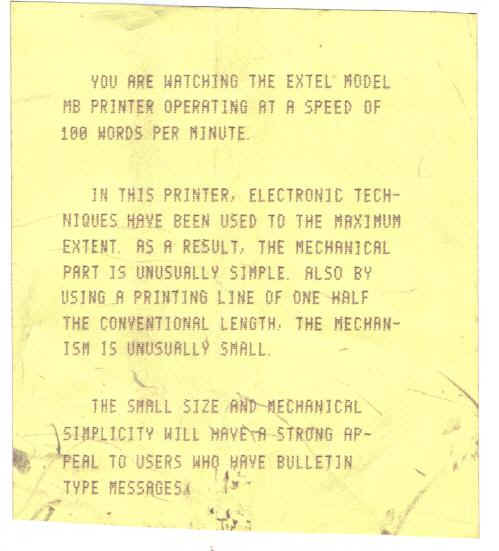
Jim Haynes Collection at SMECC
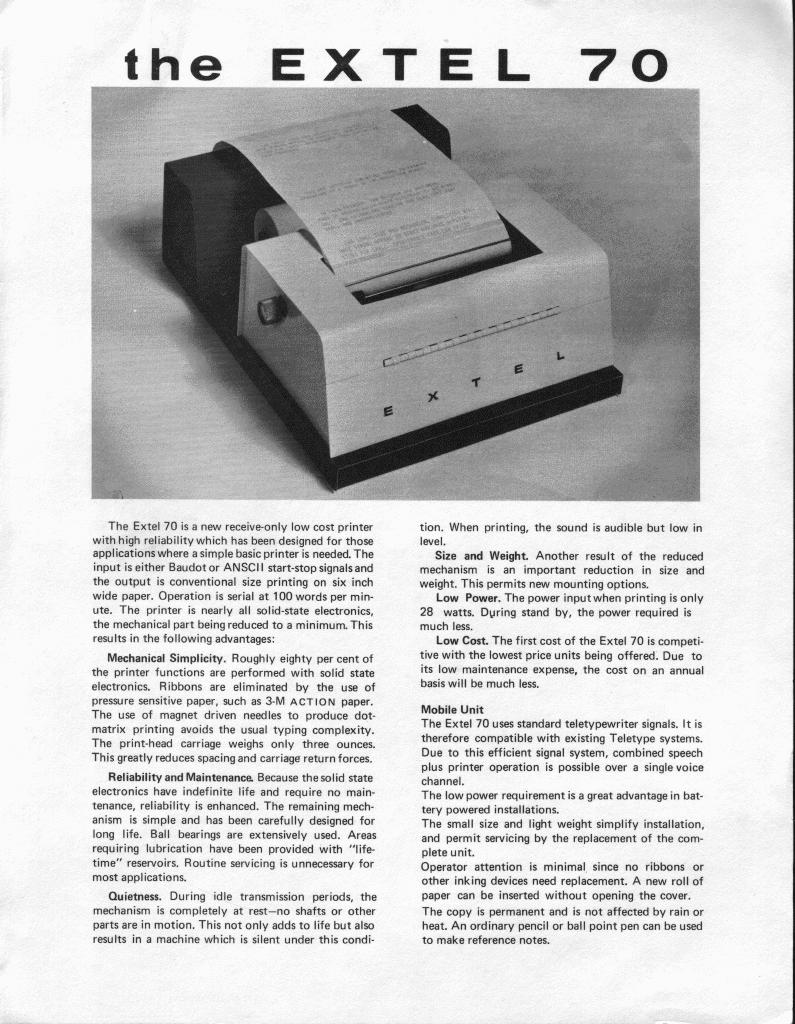
Jim Haynes Collection at SMECC

Jim Haynes Collection at SMECC
Jim Haynes says:
Extel material is included because some Extel employees, notably
including Walt Zenner, were former Teletype people.
In 2007 I acquired a Trans-Lux teleprinter for Telex, and some Extel
manuals. Apparently there was a continuing relationship between
Extel and Trans-Lux, as the printer mechanism in this teleprinter
is Extel but most of the design is by Trans-Lux. In particular there
is a patent 4,252,994 assigned to Trans-Lux covering the whole set.
Something was posted on a web site saying that Trans-Lux had built
keyboards for Extel.
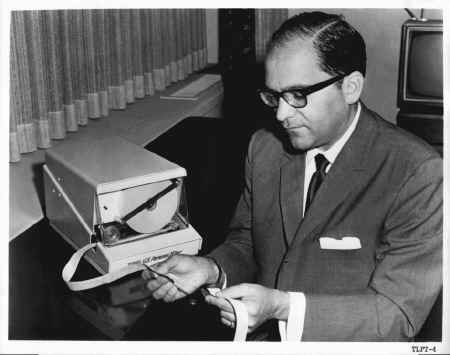
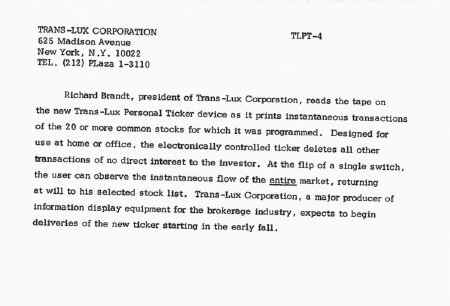
Jim Haynes Collection at SMECC
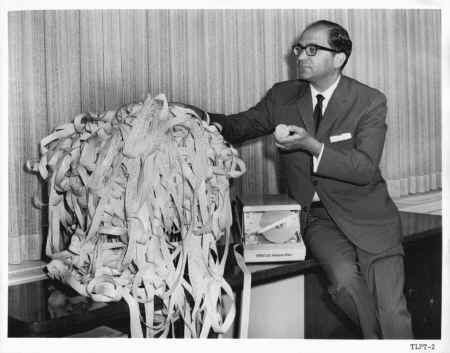
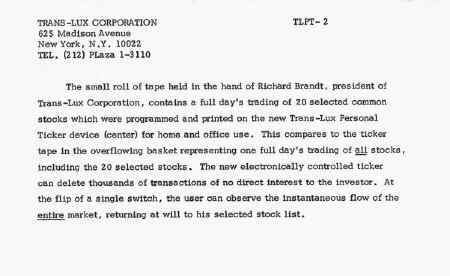
Jim Haynes Collection at SMECC
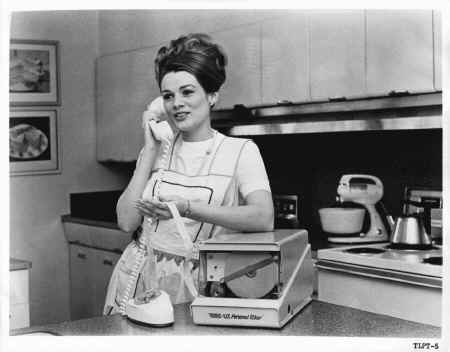 
Jim Haynes Collection at SMECC
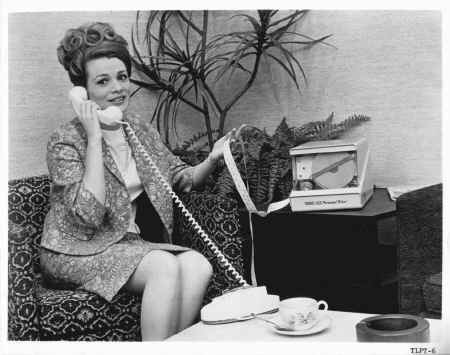
Jim Haynes Collection at SMECC
yet another use of the name....
http://www.extelsurveys.com/AboutUs/AboutUsHome.aspx
The Extel Story
The name Extel has an illustrious past. The Exchange Telegraph company
was founded in 1872 with its initial undertaking being the laying of the
first telegraphic cable on the Atlantic seabed to electronically connect
London and New York.
Over the next 100+ years Extel (the name coming into common use for the
company in the 1950's) grew into one of the leading news agencies,
provider of financial information and associated businesses. Among the
many notable achievement were 'Extel Cards', the very first corporate
snapshots/tear-sheets with brief data on P&L, employees, business
activities and executive management. Extel Cards, naturally in hard copy,
were first produced in 1922.
Between the late 1970's and 1990's Extel was subsumed into various
media groups, including United Business Media (UBM) and Pearson. The loss
of its own identity and independence undeniably reduced the effectiveness
of the business, and in 1999/2000 the historical datasets (essentially the
modern version of Extel Cards), along with the Extel Survey were acquired
by Thomson, now of course Thomson Reuters.
The Extel Survey itself began in 1974, when an independent consultant,
Geoffrey Osmint, conceived the idea of collecting views and votes from
fund managers on the services and advice they were getting from research
analysts at stockbroking houses (or investment statisticians as analysts
were then called).
The first Survey, produced in October 1974, saw some 53 fund management
firms take part (compared to 1,615 in 2008), and interest quickly grew to
around 120 asset management firms giving their views. The Survey was run
independently by Geoffrey Osmint. Between 1974 and 1985 it was sponsored
by Continental Illinois Bank of the USA (perhaps the more experienced
North American financial professionals will remember the name!).
With the demise of Continental Illinois in 1985, the Survey became the
Extel Survey, although it continued under the careful direction of
Geoffrey Osmint until 1998, when on completion of the 25th annual Survey
he left the scene.
Initially the Survey focused on the UK investment market only, and
still in 1999 it had a significant UK bias, in the data collected and the
location of respondents.
Since Extel Surveys became the Thomson Extel Surveys and now Thomson
Reuters Extel there have been a range of enhancements.
In brief -
- Website for voting and results
- Global expansion - in participation in the Survey, and encompassing
other market studies in Asia and North America
- Rankings of Corporates and Fund Managers alongside the fundamental
rankings of brokers
- The much-valued independent assessment of the Survey data and
processes by Deloitte
- Introduction of Extel IBR - an internal broker voting tool for
individual fund management firms
Extel now runs market surveys and produces bespoke studies for clients
worldwide - helping all three sides of the investment community to
identify excellence and inform investment decisions.
|
